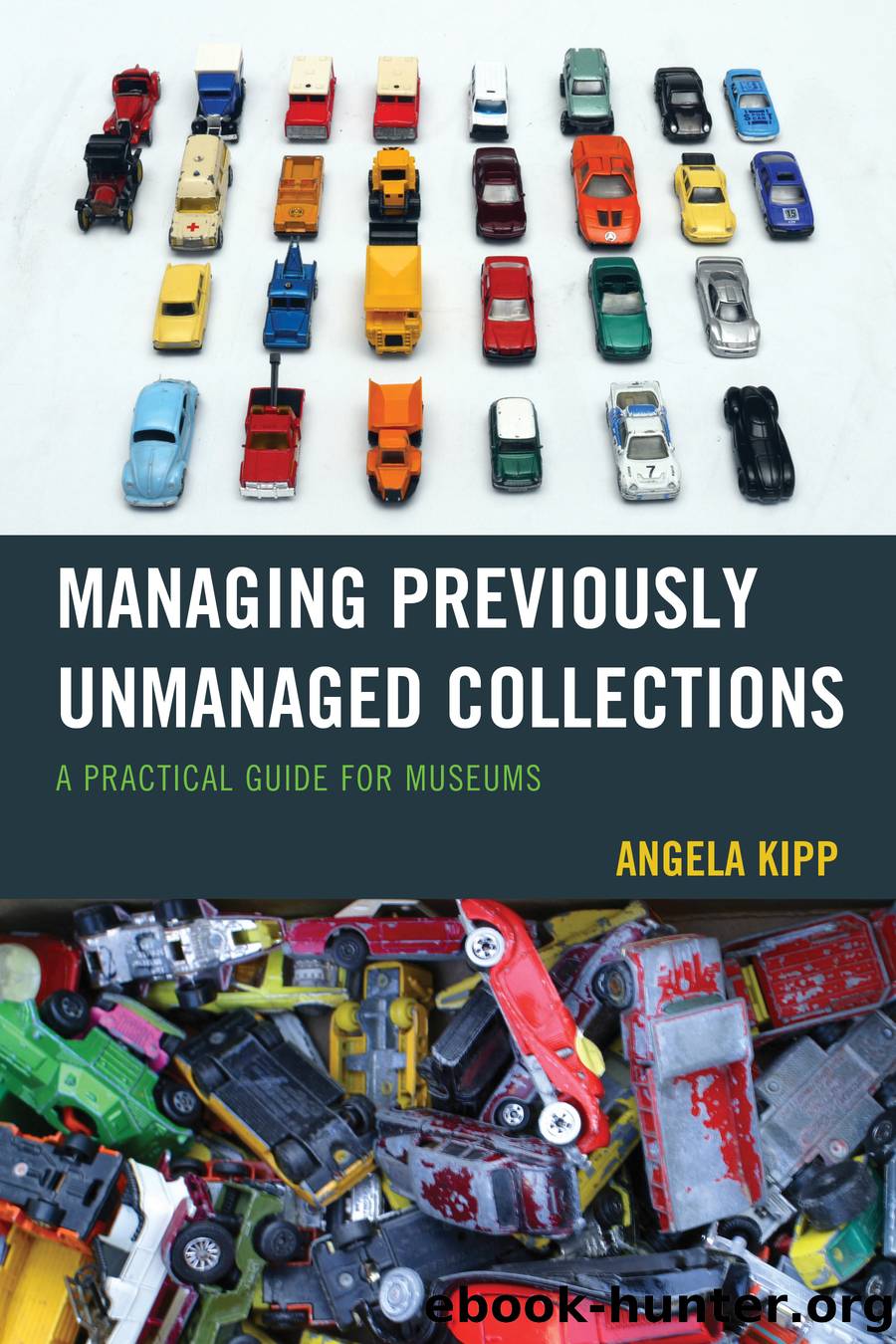Managing Previously Unmanaged Collections by Kipp Angela;

Author:Kipp, Angela; [Kipp, Angela]
Language: eng
Format: epub
Publisher: Rowman & Littlefield Publishers
Published: 2016-08-15T00:00:00+00:00
Note
1. Bob Beatty, preface to Stewardship: Collections and Historic Preservation, Book 6, Small Museum Toolkit, edited by Cinnamon Catlin-Legutko and Stacy Klingler (Lanham, MD: AltaMira Press, 2012), xii.
Chapter Seven
Getting Stuff Done
In chapter 5 we sorted our collection and maybe you sorted it several additional times until you now have it at a stage where you can actually start the accessioning process. Itâs a good thing that youâve dealt with your collection, as this means that you have gotten yourself acquainted with it. You know its strengths and weaknesses and you have a rough idea of how many objects you are dealing with. This knowledge is important, because you have to make some strategic decisions now.
Much is written about the process of accessioning and how to catalog a collection. For a start, read Object Entry Procedure, Acquisition Procedure and Cataloguing Procedure of Spectrum 4.01 and Daniel Reibelâs Registration Methods for the Small Museum.2 While reading this literature will give you a good idea of whatâs important in the next step, the material doesnât relieve you of the duty of considering your current situation and setting up a strategic plan specific to how youâll approach the documentation process of your collection.3
With the risk of stating the obvious, here are some rules that are inevitable truisms of object documentation:
The more detailed the cataloging, the more time it takes to do it.
The more detailed the cataloging, the more useful it is for research, curating, education, and any other object use.
Objects that are physically there but can not be found in documentation are âinvisibleâ for any object use.
The longer the documentation of a single object takes, the longer it takes until the whole collection is documented and the longer objects stay âinvisible.â
It is actually possible to create a completely useless catalog by being too generic and vague in naming objects in favor of saving time or by not cataloging facts that are crucial for further steps in the process. The objects are then âvisibleââbut still useless.
Download
This site does not store any files on its server. We only index and link to content provided by other sites. Please contact the content providers to delete copyright contents if any and email us, we'll remove relevant links or contents immediately.
Life 3.0: Being Human in the Age of Artificial Intelligence by Tegmark Max(5193)
The Sports Rules Book by Human Kinetics(4079)
The Age of Surveillance Capitalism by Shoshana Zuboff(3990)
ACT Math For Dummies by Zegarelli Mark(3854)
Blood, Sweat, and Pixels by Jason Schreier(3498)
Unlabel: Selling You Without Selling Out by Marc Ecko(3473)
Hidden Persuasion: 33 psychological influence techniques in advertising by Marc Andrews & Matthijs van Leeuwen & Rick van Baaren(3293)
Urban Outlaw by Magnus Walker(3245)
The Pixar Touch by David A. Price(3212)
Bad Pharma by Ben Goldacre(3100)
Project Animal Farm: An Accidental Journey into the Secret World of Farming and the Truth About Our Food by Sonia Faruqi(3019)
Brotopia by Emily Chang(2898)
Kitchen confidential by Anthony Bourdain(2834)
Slugfest by Reed Tucker(2804)
The Content Trap by Bharat Anand(2779)
The Airbnb Story by Leigh Gallagher(2703)
Coffee for One by KJ Fallon(2423)
Smuggler's Cove: Exotic Cocktails, Rum, and the Cult of Tiki by Martin Cate & Rebecca Cate(2340)
Beer is proof God loves us by Charles W. Bamforth(2252)
